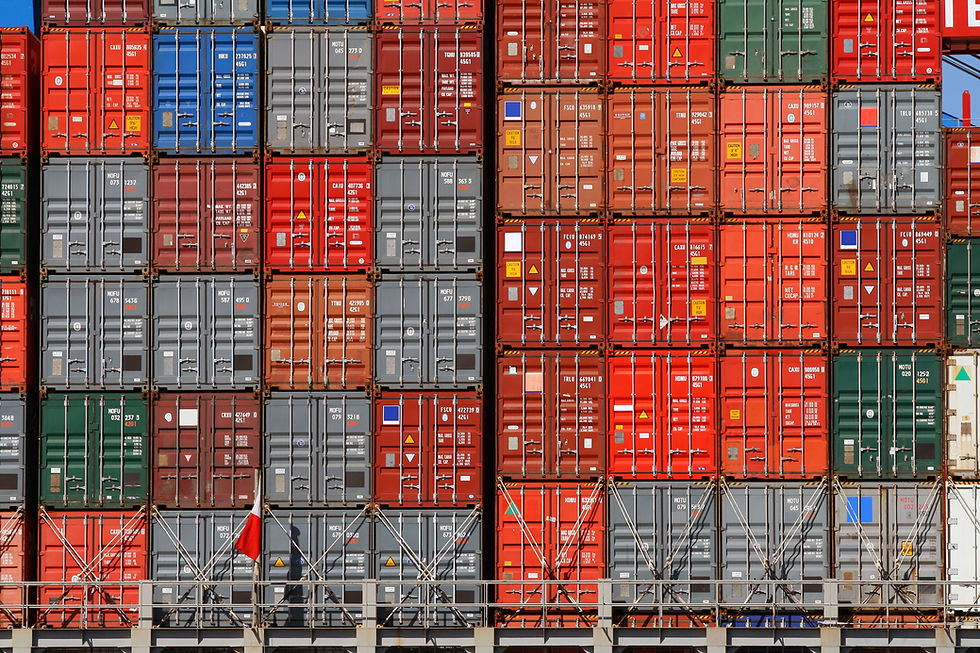The State of Supply Chain Logistics
- Kevin Speers
- Sep 28, 2021
- 3 min read
Updated: Aug 1, 2022
Two weeks ago we attended the IANA Expo and announced the launch of Splice's integrated yard management system, Yard Spot. At the event, the launch of Yard Spot sparked numerous insightful discussions on the current state of supply chain logistics, its challenges, and potential solutions. We want to share some of our observations and takeaways from those conversations.
Supply Chain Logistics Challenges
The challenges in the supply chain industry have never been more complex. Perspectives are diverse on what it will take to relieve the current congestion crisis and when it will clear. Equipment scarcity, truck and driver shortages, and overstuffed warehouses are the primary problems, among many others. With containerships waiting outside ports, these challenges have no short-term end in sight.

Most companies are not able to affect equipment availability, but they can optimize their supply chain operations using data. This is increasingly the strategy being sought across the industry. Many companies have started to provide data solutions to supply chain logistics challenges, Splice being one of them. With volumes, prices, and costs at record highs, the reasons to push forward with technology adoption are clear, making previous “wants” into “needs.” Even so, prudence is still the watchword.
Our observations go beyond the immediate issues of the day. Supply chain logistics leaders are focused on what can be controlled, and that is disciplined thinking when so much is haywire.
Planning Beyond Current State of Supply Chains
The available strategic levers have either been pulled or have been removed. This is largely caused by factors outside of companies’ control. Supply chain leaders are now thinking about actions taken today that will drive success when the cargo frenzy calms down. High on the list is digitizing activities that remain on paper and adding in newer technologies alongside legacy systems. Some companies are looking at artificial intelligence platforms, coupled with more analytics and data science, to jump ahead.
When the current flurry of cargo subsides, companies in the lead will have used this period to reposition. Which of your partners are looking over the horizon? Are you? In a world without much you can control, it is important to have control over what you can.
Complementary Technologies to Solve Novel Supply Chain Problems
The word complementary is key. The technology must round out the people and systems in place, since both are stuck in high pressure situations. Too much in-place technology does not integrate sufficiently, yet system overhauls are too taxing to conduct in the current environment. Incremental and complementary improvements to support existing people, processes, and systems are needed now.
Data Sharing as Supply Chain Empowerment
Data remains stuck in silos. This is because too many people view data as black gold, rather than as a lubricant. Information sharing is key to alleviating cargo bottlenecks, and importantly, it has a critical role in attracting and retaining the best people. The treatment of data, like other assets in a company, reveals a company’s mindset. This is a key takeaway of our recent conversations. The use of systems and technology reflect company culture. Those who share information, are inclusive, and enable higher performance are winning the competition for talent.
Resolving Supply Chain Challenges as a Long-Term Process
Finally, the biggest issues cast the longest shadows. The congested global supply chains are predicted to last into Q2 2022. That was a general consensus, and it means at least another six months of messy operations. Some believe our supply chain challenges will take even longer to subside.
A convergence of factors, led by port congestion, make this the time to change how data is produced, exchanged, and consumed. The bottom line is that integrated data improves situational awareness, and clarity yields better decisions and smoother operations. This is true for the present, and far into the future.
IANA was a great place to get these conversations started, and we will continue the discussion on issues in the industry further. Connect with us via LinkedIn or Twitter, or comment here and let us know what supply chain challenges your company is facing.


Comments